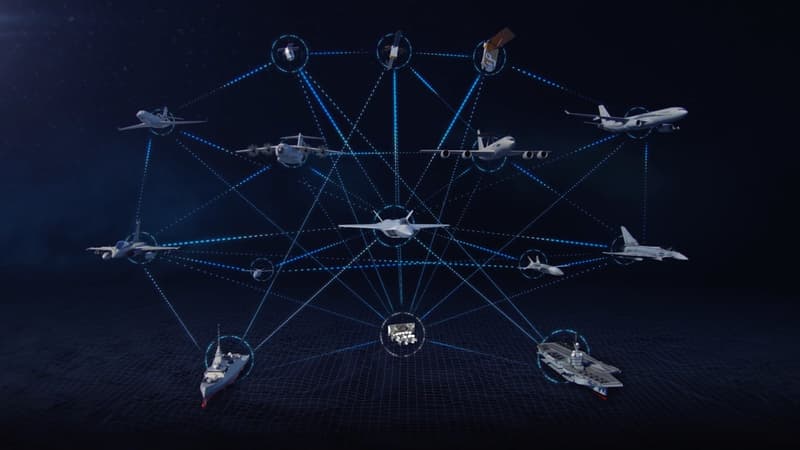March 20, 2023 could become a historic date in the European aviation industry. It is on this day that the first stage, phase 1B, of the air combat system of the future begins and enters the operational phase.
At its Saint-Cloud (92) facility, Dassault Aviation, prime contractor and architect of this phase of the programme, welcomes teams from Airbus, Indra and Eumet (a joint venture between Safran Aircraft Engines and MTU Aero Engines). Together, they have to work on the NGF (Next Generation Fighter), the fighter plane at the heart of the combat system. They now have 36 months and a budget of 3.6 billion euros to prepare the NGF demonstrator that they must present in 2029.
For this design phase, a “digital platform” was created using Catia software from Dassault Systèmes. This digital design tool is the most widely used in the world in aeronautics and shipbuilding. Among its users: Boeing, Bombardier, Airbus and even the US Navy for the Virginia-class submarine that will soon outfit Australia.
The era of collaborative combat
The NGF is intended to replace from 2040 the French Rafale and the German and Spanish Eurofighters, the three partner countries. This aircraft will not only be more capable, but it will be designed for new forms of combat. It will have new weapons such as hypersonic missiles or laser cannons. The fighter will be connected to drones, as well as air, naval, ground or space capabilities, through a 100% European combat cloud.
At the next Paris Air Show (June 19-25, 2023), we surely won’t see a model or even a sketch of the NGF. During the previous edition, in 2019, a full-scale model of the symbol was exhibited.
The challenges of Phase 2
Is the future of Scaf assured? Everything seems to say it, but nothing is said. At the end of this 36-month period, a further 5 billion will be needed to launch phase 2, which should lead 36 months later to a flying prototype, the famous demonstrator. And for this optional slice.
This new budget must go through a vote in the three partner countries, each of which will establish its conditions for the continuation of the program. France and Germany have already announced their desire to closely monitor their industrial interests. The Phase 1B negotiations assure Dassault that it will not share its technologies and knowledge.
An important issue is allowing France to freely export NGF to supply Rafale customers without risking a German veto. For Dassault, export is a central theme.
Meanwhile, the Rafale will not remain on the ground with the arrival of the NGF. She will remain “online until 2060”. The Air Force and Naval Air fleets are currently being upgraded to version F4.1. Dassault teams have also started thinking about the F5 standard which will be released between 2026 and 2027. This future Rafale will be Scaf compatible and also ready for collaborative combat.
Source: BFM TV


